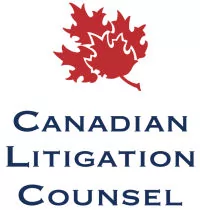First Presented at the CBA-OBA Professional Development Program: Fast Out of the Gate: An Insurance Law Primer
Generally, an insurance policy will contain the following key information:
- An introduction or general statement regarding the purpose of the policy, the type of policy and what the policy is intended to cover
- Definitions of key terms cited throughout the policy document
- Details of what is covered
- Details of what is excluded from coverage
- When and how the policy may be cancelled
- Declarations containing the amount(s) of coverage and any deductibles that may apply
Exclusions
'Exclusions' are specific situations or instances where an insurance company will not provide coverage. For instance, residential policies, i.e. that cover damage by fire, water, tree falling on the house, and so much more, are fairly standard but there are nuances when it comes to what is insured, what is excluded and what is required from the insurer and the insured.
The same applies to all policies, such as commercial general liability (CGL) policies which may have been drafted with the particular insured or business in mind and therefore have very particular exclusions or LTD policies which have particular exclusions for pre-existing illness for instance.
Below are some common exclusions for which insurance companies will not provide coverage:
Home Insurance:
- Poor workmanship
- Wear and tear/rust and corrosion
- Intentional acts
- Vacancy
Commercial General Liability
- Work performed
- Contractual Liability
- Pollution
- Intentional acts
Automobile Insurance
- Carrying explosive or radioactive material
- Automobile used as a taxi, cab, bus, etc.
- Excuded Drivers and Driving without Permission
- Loss due to war activities, i.e. insurrection, revolution
Life Insurance
- Suicide - often excluded in the first two years of the policy.
- Disability and Critical Illness
- Death while engaging in a criminal activity
- Act of War
Occurrence vs. Claims-made Coverage
In assessing or advancing a first party claim, even though a valid insurance policy was in place at the date of loss, the claim may not be covered. There is an important distinction to be made between occurrence policies and claims-made policies due to their effect on when coverage is triggered.
An 'occurrence policy' provides coverage for any incident which occurs during the period the policy is in place and regardless of when a claim is made. Therefore, an occurrence policy will provide coverage, even long after that particular policy has expired, so long as the incident occurred during the period when coverage applied.
An example of an 'occurrence policy' is a policy for automobile insurance which will cover an insured for an accident which occurred during the coverage period, even if the policy is no longer in place when a claim is made.
In contrast, a 'claims-made policy' will only provide coverage if the policy is in place at the time the actual claim is made, even if the incident occurred before the policy was in place.
Claims-made policies are typically used in coverage for professional negligence. If you are a legal professional practicing in Ontario, your coverage through LAWPRO likely falls in this category. Before providing advice on a first party claim, the lawyer must confirm the type of policy and whether there is coverage for the claim contemplated.
Go to Responsibilities of the Insurer and Insured - Part 3
The content of this article is intended to provide a general guide to the subject matter. Specialist advice should be sought about your specific circumstances.

